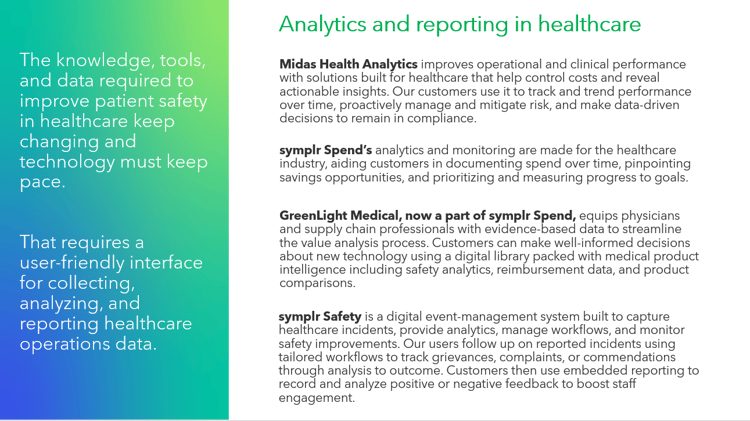Better Healthcare Outcomes, Better User Experiences Start with symplr Customers

Think about a time when you had a moment of confusion or annoyance when using your phone or computer. Did the experience make you wish you could talk to the application designers? There’s a mechanism for that: user experience (UX) research!
At symplr, we speak directly with our customers to decide what features to include, fend off frustration like that in our example, and continually improve our solutions for our 5,000+ users in healthcare. And while we’d love to talk with every customer individually, we employ UX research to connect with selected customer/partners who can shine a light on what they need. Often, their expressed need reflects a widespread one among users of a given symplr provider data management, workforce management, or governance, risk management, and compliance solution.
What is UX research at symplr?
User Experience Research Manager Judy Summersgill characterizes UX research as a critical component for continuously understanding the people who use our products and their needs. "Deepening this understanding can help us decide what we need to build as well as how to build it.” Senior Director of User Experience Jessica Hammer leads symplr’s UX research team, composed of Summersgill and Basu Sen, UX researcher. The team works in close partnership with each other and with symplr’s customers to pinpoint areas in solutions that require further study.
Once they identify the area of research, Summersgill said, “We use techniques such as interviews and usability tests, engaging with end users of our products.” She added, “We document all aspects of the user experience observed during our studies, and pay special attention to the attitudes, feelings, and behaviors of users." The goal is to translate the team’s findings and analysis into an optimal application experience and, ultimately, happier users.
The UX team at work
Objective: Streamline payer document uploads
A shining example of the UX team and the user research process at work occurred recently with symplr Payer. This application enables payer organizations to successfully complete the critical and time-consuming task of uploading the many documents needed to support the contracting process with providers. Users from four symplr Payer customer organizations contributed their time and expertise to test a newly designed workflow for contracting. To ensure the concept would work well for the people who use it, the UX team conducted sessions where participants completed a few tasks using a prototype and shared their thoughts about the experience.
"We pay special attention to the
attitudes, feelings, and behaviors of users.”
—symplr User Experience Research Manager Judy Summersgill
Summersgill said, “We hoped the new workflow would streamline the steps to upload documents and be more intuitive to use, but we needed to watch people who do this work daily.” Participants gave the newly designed process a thumbs-up, ranking it highly on an “ease of use” survey. But more importantly, by watching participants interact with the prototype, the researchers pinpointed four “usability issues”—places where users might stumble when using the workflow on their own. Knowing about these challenges and other like them will help the UX designers improve the design for all symplr end users.
Objective: Simplify survey creation and “save clicks”
symplr Compliance helps healthcare professionals deliver an effective compliance program to mitigate operational and financial risks across health systems. The application is equipped with a powerful survey creation tool that allows customers to build and conduct critical surveys, among them conflict-of-interest surveys, for their organizations. As compliance professionals know, the survey setup process can be challenging; in many cases, more information must be collected based on a respondent’s answers.
With a newly designed prototype for creating a survey in hand, the symplr UX team set out to solve this and other survey creation challenges. Six individuals from five healthcare organizations that use symplr Compliance participated in a 30-minute virtual session, where they used the prototype to add questions to a survey.
The goal is to translate the team's findings into an
optimal application experience and, ultimately, happier users.
—symplr User Experience Research Manager Judy Summersgill
Watching the participants interact with the prototype allowed the UX researchers to identify points of uncertainty or frustration. UX designers took this information and re-vamped the workflow to save clicks and provide the needed context. Soon, all symplr Compliance users will benefit from the research.

Better operations and better outcomes start with symplr customers
As a pioneer in healthcare operations solutions and services, symplr understands the unique, daily challenges of the healthcare industry and we’ve built our solutions with our customers in mind. But to enhance our users’ ability to achieve truly connected, integrated, enterprise-wide operational efficiencies, we rely on their frequent and honest feedback.
The work of the symplr UX research team is a tangible reminder of our essential, valuable partnership with customers. We’re grateful for the trust all our users place in us, and thankful for the customer/partners who go above and beyond to help us improve our solutions for the good of all.
symplr customers: Join our UX program! Email ux@symplr.com
Read related post: The Story of a “symplr” Design System
